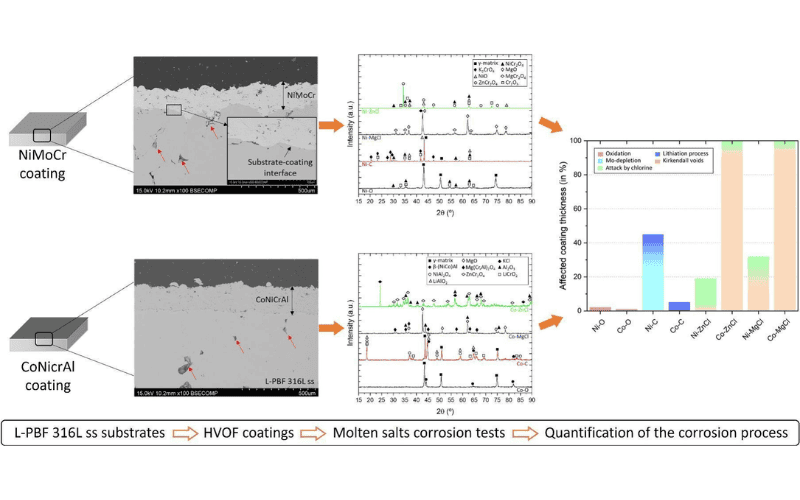April 19, 2024
Impact Of Molten Salts Composition On The Corrosion Behavior Of Nimocr And Conicral Coatings On L-PBF 316L Stainless Steel For CSP Plants
The high-temperature corrosion performance of NiMoCr and CoNiCrAl coatings produced by high velocity oxy-fuel (HVOF) on laser powder bed fusion (L-PBF) 316L stainless steel substate has been evaluated in presence of three different molten salts used as thermal energy storage (TES) materials for concentrated solar power (CSP) plants. The coatings have an excellent oxidation resistance at 700 °C, showing a percentage of affected thickness lower than 2 %, due to the formation of a protective layer of Cr2O3 and Al2O3 in both NiMoCr and CoNiCrAl coatings, respectively. The carbonates-based molten salt accelerates the corrosion of the NiMoCr coating, affecting around 43 % of the coating thickness, due to the formation of chromates and the high depletion of Mo in the coating. In contrast, the effective protection shown by the CoNiCrAl coating is explained because the grown LiAlO2 after the lithiation process has a high capacity to act as a strong diffusion barrier for metal ions and inhibited the formation of chromates. In the presence of two different ZnCl2 and MgCl2-rich molten salts, the CoNiCrAl coating behaved worse than NiMoCr coating due to the breakage of the (Al,Cr)-rich oxide layer as a consequence of an active oxidation mechanism and due to the formation of voids along the entire thickness, which were identified in 100 % of the coating thickness. The superior corrosion resistance of the NiMoCr coating in presence of the chloride rich molten salts was attributed to the presence of Mo, which fixed the Cr and inhibited the diffusion of oxygen.
Key words: Coatings, HVOF, Molten salts, Oxidation, High-temperature corrosion
Originally published at Surface and Coatings Technology (Volume 482, 30 April 2024, 130744)
By N. Abu-warda, J. Bedmar, S. García-Rodriguez, M.V. Utrilla, B. Torres, J. Rams
